Description
ABSTRACT
True in Rem and Quasi in Rem Claims: Does Order 5 Rule 1 of the Admiralty Jurisdiction Procedure Rules 2011, Apply to Both?
Dr. Chukwuechefu Ukattah*
The most unique and significant feature of admiralty law is the action in rem, a proceeding against a ship or res by a process of arrest to compel the appearance of the owner. An in rem action can be distinguished from an action in personam, where a relief is claimed against a defendant to personally carry out an obligation or to refrain from doing an act. An in rem action could either be ‘true in rem‘ or ‘quasi in rem‘. Nigerian courts and counsel have however failed to appreciate the fine distinction between the two types of in rem action, with a resultant impact on practice and procedure. Against the background of the confusion, the article reviews the provision of the Admiralty Jurisdiction Act, the Admiralty Jurisdiction Procedure Rules, and decided cases, with respect to parties, claims and service of processes in true in rem and quasi in rem actions.
Keywords: Admiralty jurisdiction, Action in rem, True in rem, Quasi in rem.
INTRODUCTION
Admiralty law is a specialised branch of law that is sui generis with its unique specialised rules and practice.1 It is different from ordinary civil actions and as such the principles, rules, procedure and practice in civil matters are an anathema to admiralty law and practice.2 The rules and procedures of admiralty law are technical and some are mandatorily applied in admiralty matters. In emphasising the sui generis nature of admiralty matters, the Nigerian Court of Appeal has held that ‘admiralty is a specialised branch of law. Some of the procedures applicable to admiralty matters are peculiar to admiralty alone due to its specialised nature’.3 This underscores the need for a proper elucidation of the sui generis nature of admiralty law,4 the rules, principles, applicable practice and also the need for admiralty matters to be handled by trained and experienced maritime lawyers with requisite knowledge of the principles and practice of admiralty law.
This article does not intend to examine all the principles and practice of admiralty law, but to analyse the most unique aspects of admiralty law that imbue it with its most unique trait and utility: action in rem. This examination is to provide a clear understanding of the salient distinction between the two categories of in rem claims, viz, true in rem and quasi in rem claims.
* LLB (ABSU), LLM in Shipping Law with distinction (Cape Town), Ph.D. in Shipping Law (Cape Town). Senior Associate, Olaniwun Ajayi LP, Lagos, Nigeria.
- Its uniqueness could be seen in both its history and the sources from which it has been drawn. For a historical account of admiralty, see F Wiswall, Development of Admiralty Jurisdiction and Practice since 1800: An English Study with American Comparisons (Cambridge University Press 1970); N. Meeson & J. Kimbell, Admiralty Jurisdiction and Practice (4th edn, Informa Law 2011) 1-12.
- Capt Satyan I-Hull 240 v Ivory Merchant Bank Ltd (2001) 9 NSC 28 at 38 (CA); M/V ‘Da Qing Shan’ & Ors v PAC PTF Ltd (1991) 8 NWLR (Pt. 209) 354 (CA).
- M/V S Araz v Messrs M/V Scheep (1996) 5 NWLR (Pt. 447) 204 at 224 (CA). See also Stallion Nigeria Ltd v The M/V ‘Aria’ & Ors (1997) 7 NSC 204 at 220 (FHC).
- For an interesting paper on the purpose of maritime law vis-à-vis modern developments, see R. Fisher QC, ‘The Purpose of Admiralty Law’ (2004) 18 Australia and New Zealand Maritime Law Journal 14.

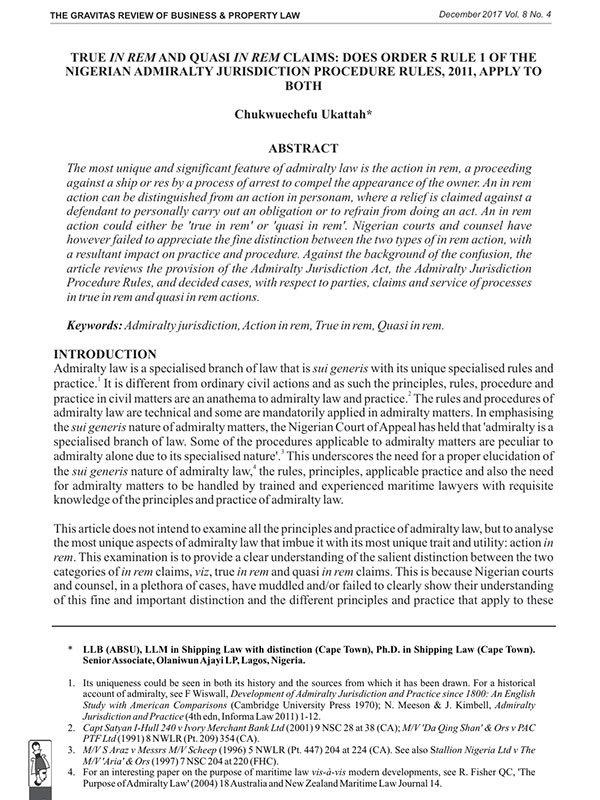
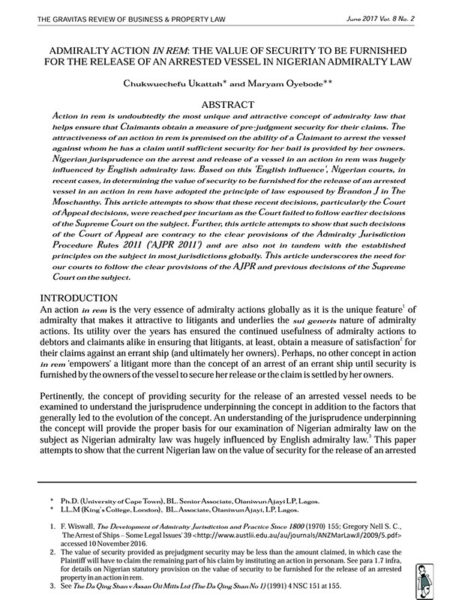
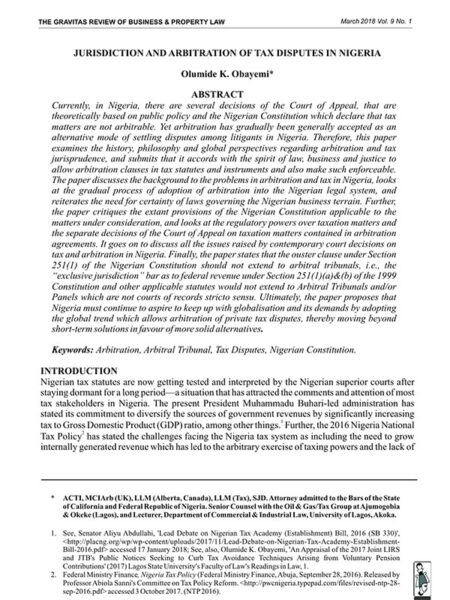
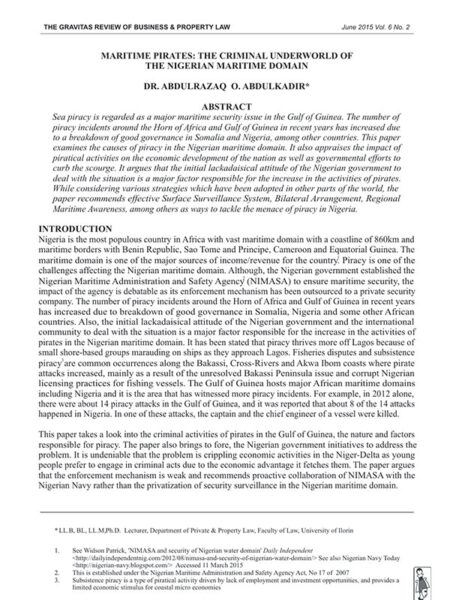


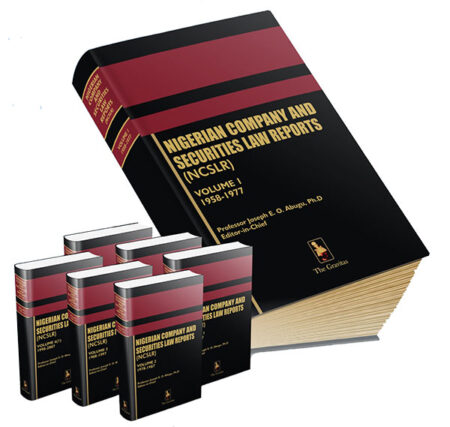
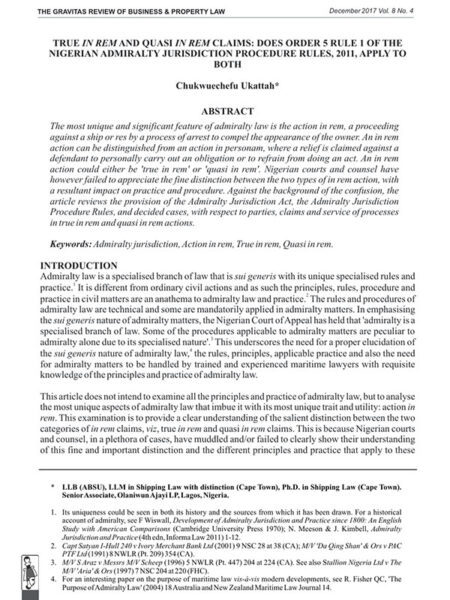
Reviews
There are no reviews yet.